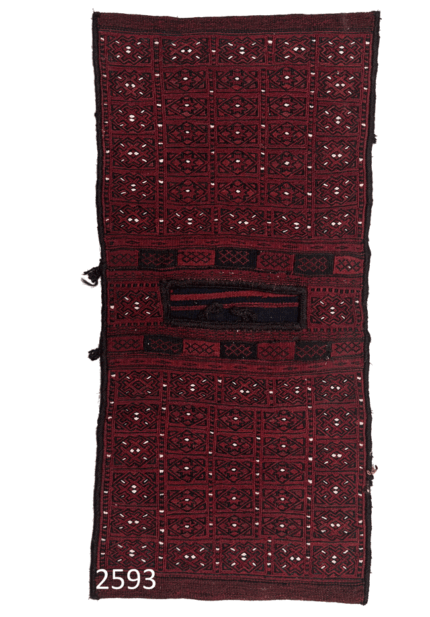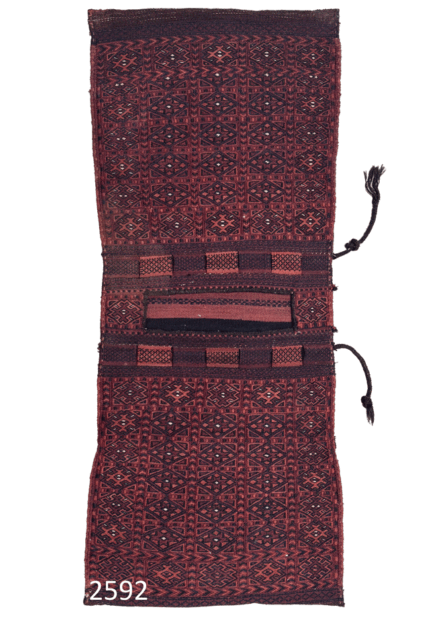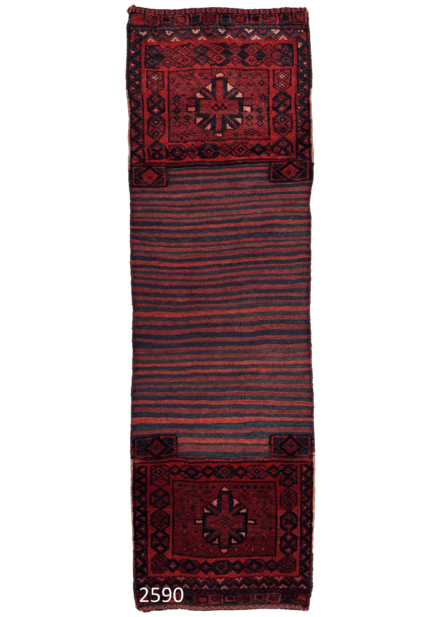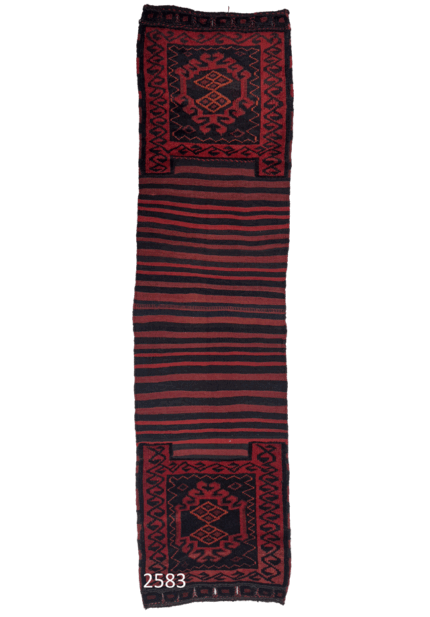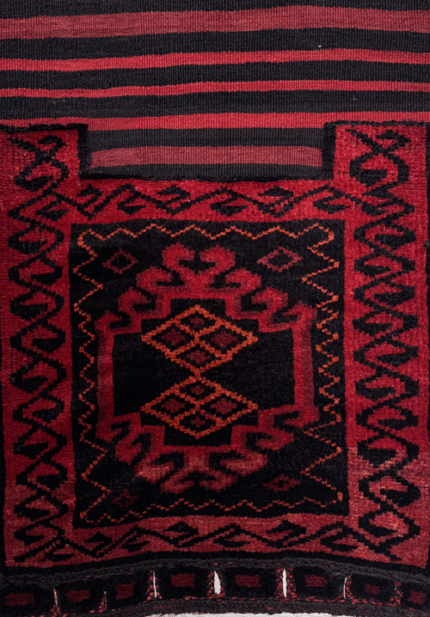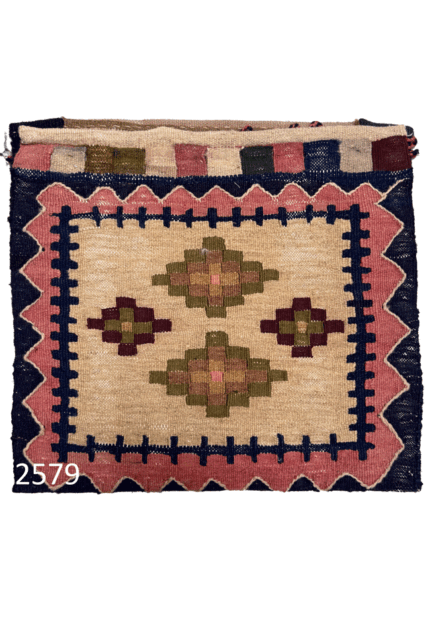Saddlebags
Persian Saddlebags : The Handwoven Legacy of Nomadic Iran
Among the most iconic woven objects of Persian nomadic life, Persian saddle bags, known locally as Khorjin, hold a special place in Iran’s textile heritage. Rich in design, color, and utility, these handwoven treasures were crafted not only for practical use—but also as an artistic expression of tribal identity.
A Dual-Pouch Masterpiece
A traditional Saddlebag consists of two woven pouches connected by a central panel. This simple yet ingenious design allowed it to be draped over horses, donkeys, or even carried on the shoulder. Larger saddle bags were made for horseback use (horse saddlebags), while smaller versions were designed for daily needs—especially by shepherds—carried across the shoulder with a central slit for the arm, offering an ergonomic fit between the shoulder and elbow.
Many Saddlebags feature a locking mechanism known as a “rope lock”, where small handwoven cords are passed through slits to secure the bag shut—functioning much like a primitive lock and key.
Variety of Weaves and Motifs
Khorjins are woven in both kilim (flatweave) and pile rug techniques, and their motifs are as diverse and complex as those found in full-sized Persian carpets. Designs often reflect the environment, symbols of protection, tribal identity, and practical needs.
From geometric to floral to abstract patterns—there are no limits in color or composition. This diversity makes every khorjin a unique visual artifact.
Tribes and Regions
Some of the most collectible and finely made khorjins come from well-known nomadic tribes:
•Qashqai saddle bags (soft wool, bold geometry)
•Shahsavan saddle bags (sumak and intricate motifs)
•Bakhtiari saddle bags (robust build, vibrant colors)
•Afshar saddle bags (compact, finely detailed)
Each region’s saddle bags carry unique signatures—from knot count to dye palette.
From Nomadic Utility to Collectible Floor Art
In recent years, many vintage khorjins have been unfolded and repurposed as floor runners or decorative textiles. Once opened, their panels reveal stunning compositions previously hidden in functional form.
These upcycled saddle bags are now widely used as decorative table runners, hallway rugs, or wall hangings, connecting modern interiors with centuries of tribal craftsmanship.
Showing 1–12 of 148 resultsSorted by latest


